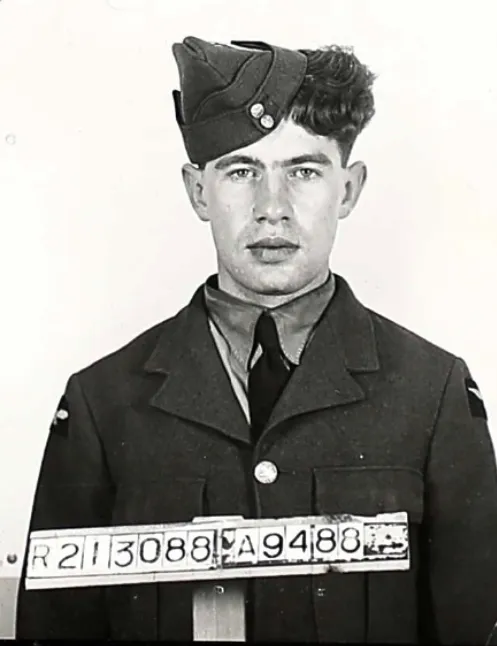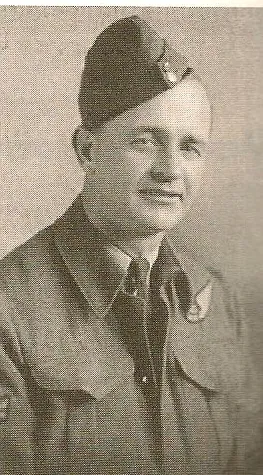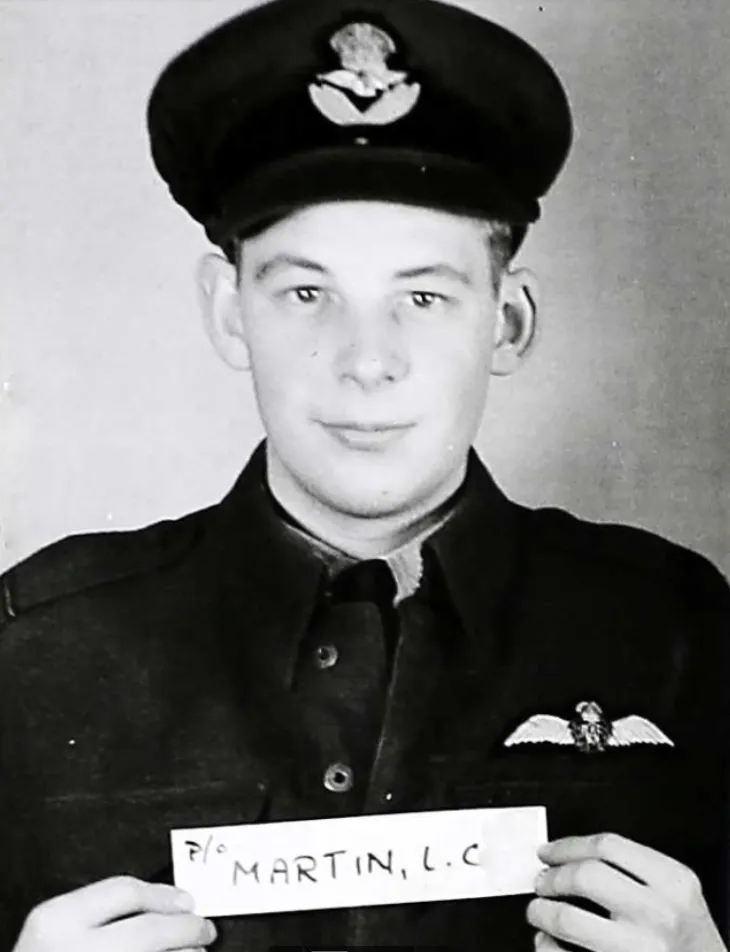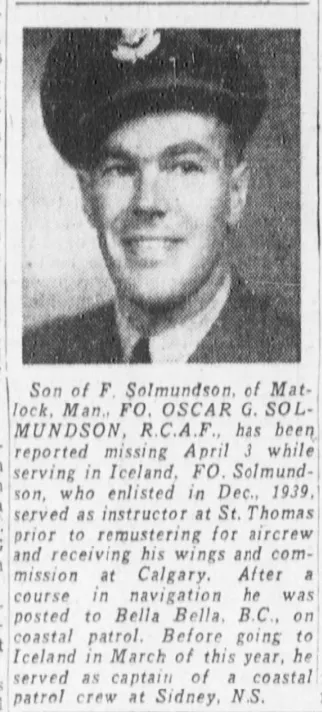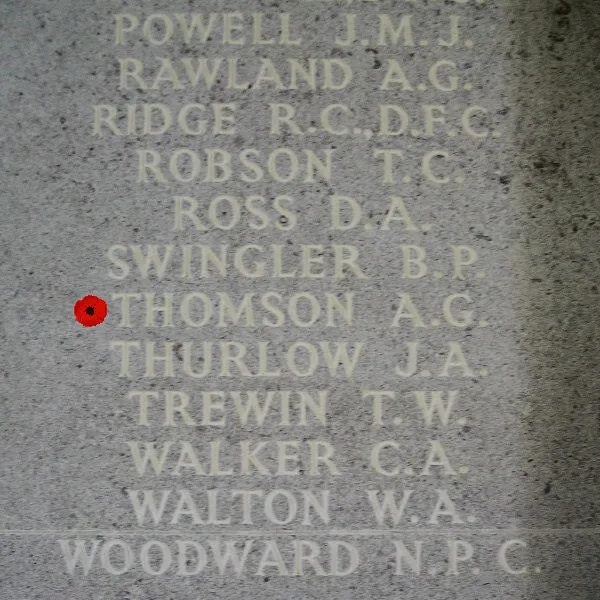Hart, John William (Flying Officer)
Killed in Action 1945-April-03


Birth Date: 1924
Born:
Parents: Son of Teddie Carlyle Hart and Ellen Hart, of Becher, Ontario, Canada.
Spouse:
Home: Becher, Ontario
Enlistment:
Enlistment Date: unkown date
Service
RCAF
Unit
162 (BR) Sqn- Squadron
Sectabimur Usque Per Ima We will hunt them even through the lowest deeps
Base
RAF Reykjavik, Iceland
Rank
Flying Officer
Position
Wireless Air Gunner
Service Numbers
J/28106
Prev: R/185522
Home
Crew or Other Personnel
Canso 11066
Accident Card - Consolidated Canso A serial:11066
This accident involved 1 aircraft on 1945-April-03. Cnso A s/n 11066.
This accident involved 9 people. Bentley LS, Grear WL, Hart JW, Jackson WC, Macneil RG, Martin LC, McConnell JR, Solmundson OG, Thomson AG
This accident had 9 fatalities. Warrant Officer 2 William Leonard Greer RCAF Killed in Action service no:R/176606 Canso 11066, Flying Officer Leslie Charles Martin RCAF Killed in Action service no:J/35346 Canso 11066, Flight Sergeant Ralph Gordon MacNeil RCAF Killed in Action service no:R/65104 Canso 11066, Sergeant Lloyd Sinclair Bentley RCAF Killed in Action service no:R/213088 Canso 11066, Flight Sergeant John Robert McConnell RCAF Killed in Action service no:R/141994 Canso 11066, Flying Officer Oscar George Solmundson RCAF Killed in Action service no:J/27529 Canso 11066, Flying Officer John William Hart RCAF Killed in Action service no:J/28106 Canso 11066, Flight Lieutenant Alexander George Thomson RCAF Killed in Action service no:J/14493 Canso 11066, Flight Lieutenant William Calder Jackson RCAF Killed in Action service no:J/26022 Canso 11066
Canso serial: 11066
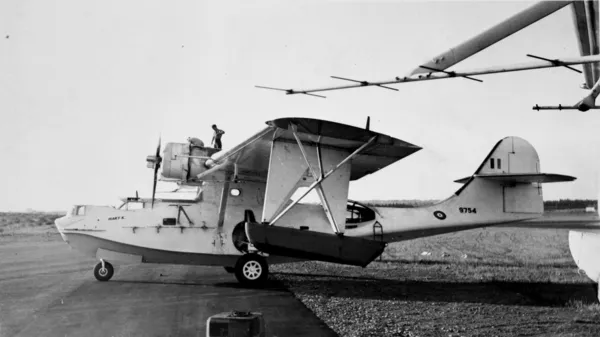
The Consolidated Catalina and Canso were close cousins. The Canso was the true amphibious version of the design and therefore included a conventional undercarriage to allow for either water or land use. The Canso provided more than two decades of valuable service to the RCAF. The Catalina variant came first and was produced beginning in 1935 for the United States Navy. The amphibious version, designated PBY-5A, came in service early in 1941 and the RCAF began using the aircraft on anti-submarine patrols that same year. After the Second World War, the RCAF used Cansos for search and rescue, Arctic survey missions and various transport operations. RCAF
Aircraft Images
Canso 11066
Canso A 11066
Delivered new to storage. First issued to a unit on 2 August 1944. Arrived in Iceland on 11 august 1944, for use by No. 162 (BR) Sqaudron. First aircraft equipped with eyeball nose turret with this unit, also had 4 fixed .303 machine guns in nose. To No. 4 Repair Depot for major inspection 30 October 1944. To No. 162 (BR) Squadron in Iceland on 30 January 1945. Still with this unit when lost without a trace while on patrol out of Iceland on 3 April 1945.1944-04-10 Taken on Strength Eastern Air Command 2019-08-20
1945-April-03 Accident: 162 Squadron Loc: Unknown Names: Bentley | Grear | Hart | Jackson | Macneil | Martin | McConnell | Solmundson | Thomson
1945-06-20 Struck off Strength Struck off after crash, see comments 2019-08-20
Unit Desciption
162 (BR) Sqn Sectabimur Usque Per Ima ()
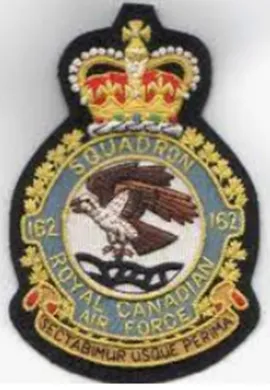
The squadron was formed as a Bomber Reconnaissance unit at Yarmouth, NS on 19 May 1942, flying Consolidated Canso A aircraft. The squadron remained at Yarmouth until January 1944 in uneventful anti-submarine duty. In January 1944 it was lent to RAF Coastal Command and operated from Reykjavik, Iceland until 13 June 1945. One U-boat was destroyed by aircraft from Reykjavik. During part of 1944 the squadron operated from Wick, Scotland, and found success by destroying 4 German U-boats and sharing in the destruction of a fifth. During one of these engagements, with U-1225, Flight Lieutenant D.E. Hornell and crew sank the U-boat but their aircraft was forced to ditch as a result of anti-aircraft fire from the submarine. The crew spent 21 hours in a single dinghy. 2 of the crew died, and Hornell himself died shortly after his rescue. He was posthumously awarded the Victoria Cross for his inspirational leadership and devotion to duty.
Details of the U-boat sinkings were as follows. On 17 April 1944 Flying Officer T.C. Cooke and crew in Canso 9767 “S†flying from Iceland sank U-342; on 3 June 1944 Flight Lieutenant R.E. McBride and crew in Canso 9816 “T†flying from Wick sank U-477 in the face of intense return gunfire; on 11 June, 1944 Flying Officer L. Sherman and crew in Canso 9842 “B†flying from Wick sank U-980; on 13 June 1944 Wing Commander C.G.W Chapman and crew in Canso 9816 “T†flying from Wick sank U-715 although their aircraft was shot down and the crew had to take to their life rafts with the loss of one of their number (Chapman was awarded the squadron’s first DSO); on 24 June 1944, Flight Lieutenant D.E. Hornell and crew in Canso 9754 “P†sank U-1225 (see above); on 30 June 1944 Flight Lieutenant R.E. McBride and crew in Canso 9841 “A†flying from Wick damaged U-478 which was later finished off by an RAF 86 Sqn Liberator; on 4 August 1944 Flying Officer W.O. Marshall and crew in Canso 9759 “W†flying from Wick damaged U-300.
In the course of WWII, the squadron flew 2100 sorties for 22, 600 operational hours. 6 aircraft were lost, and 34 aircrew, of whom 17 were killed and 17 missing. Squadron members were awarded 1 VC, 2 DSO's, 2 MBE's, 16 DFC's, 3 AFC's, 4 DFM's, 1 BEM and 21 Mid's. The squadron returned to Canada on 14 June 1945 and was disbanded at Sydney, NS on 7 August 1945.
Maps for Movements of 162 Squadron 1942-45
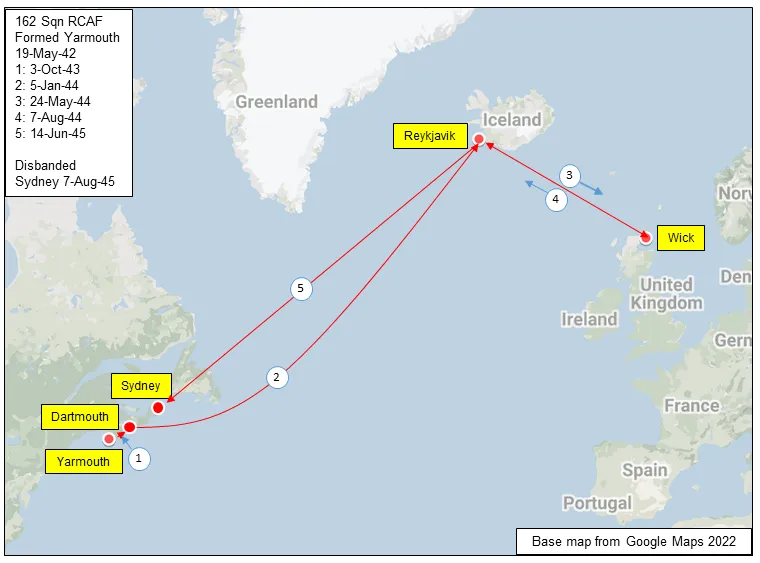
MAP 1: 162 Squadron Movements 1942-45 (right-click on image to display enlarged in new tab)
|
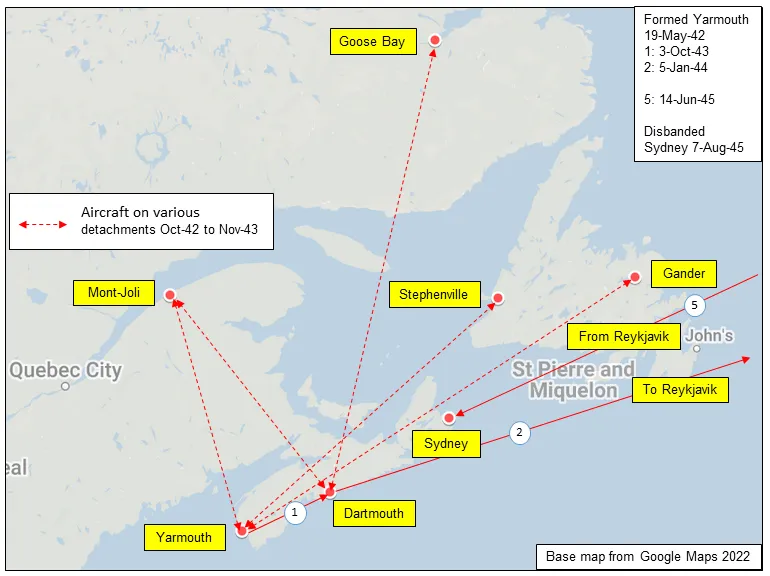
MAP 2: 162 Squadron Movements Eastern Canada 1942-44
|
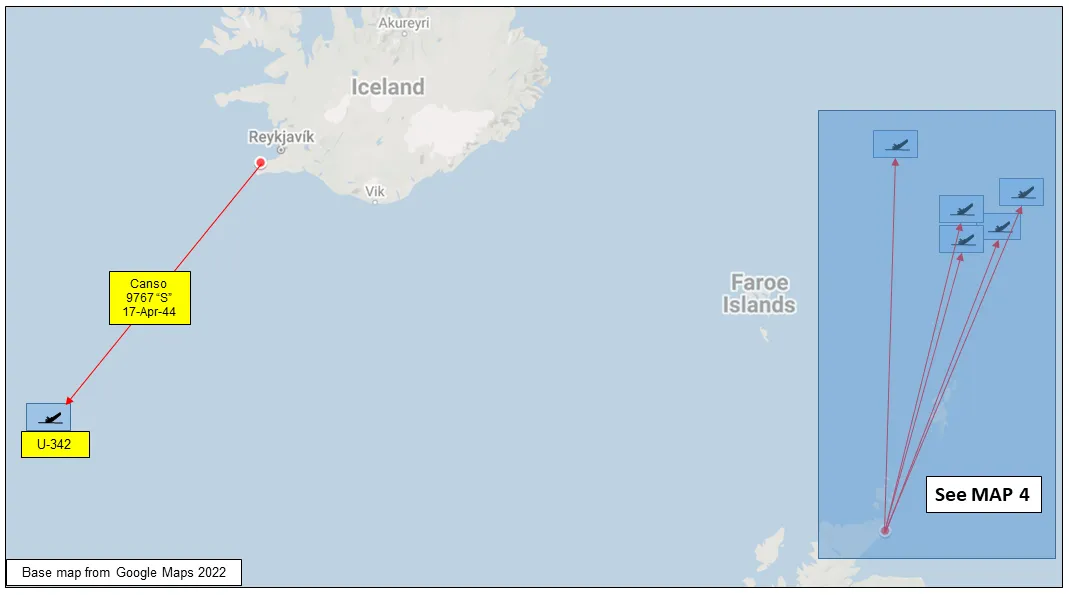
MAP 3: Sinking of U-342
|
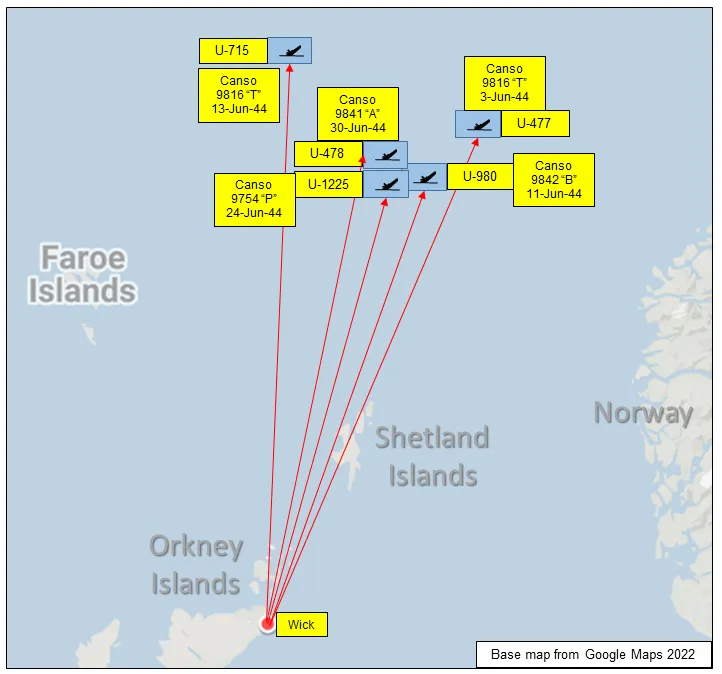
MAP 4: U-boat sinkings from Wick
|
162 Squadron History Summary 1942-45
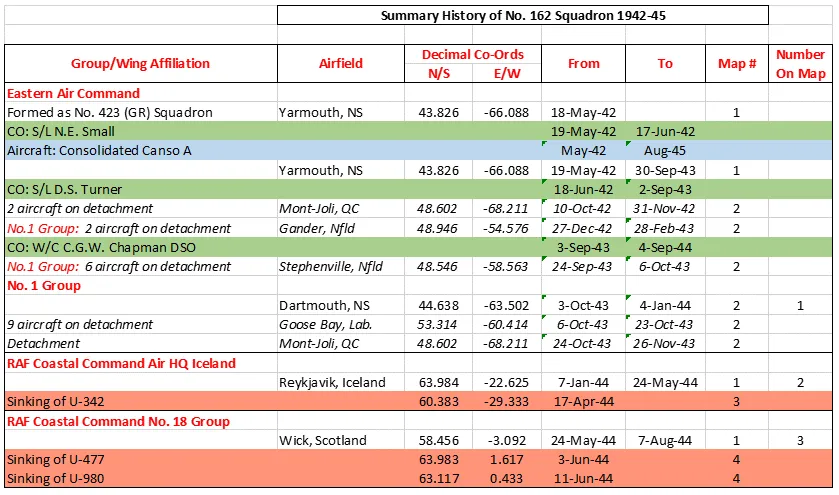
162 Squadron History Summary 1942-45 Page 2

